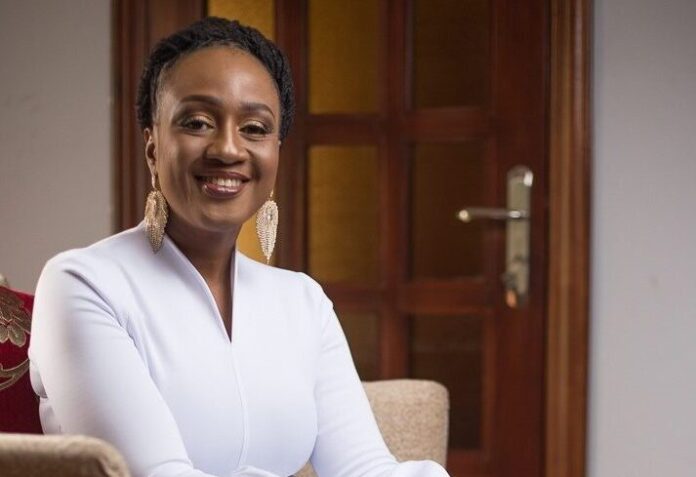What you wear has a lot to say about you even before you say a word about yourself. There are various work clothes for various workplaces so what you wear for work should be one that people can easily identify your profession.
Just as in the article for what men should wear for work, you must first consider who you are; your height, your body shape – whether you are a triangle, rectangle, hourglass, inverted triangle, oval, diamond shaped, athletic body type, apple. Then your skin tone – whether it is warm, cool or neutral, and the colors that complement it.

Whether you are new in the corporate space or have been in it for some time now, getting dressed for work can be a challenge. You typically want to wear something that will be awe-inspiring to people at the workplace without actually taking the focus off your work. Building a well-designed wardrobe that can serve you for your workplace is an option that is totally within your reach. You can have clothing that you can combine over and over again, and yet, people may see them as new sets of clothing every time you wear them to work.
As I mentioned in the What to Wear in the Workplace for Men article, do not choose to dress casually to work even if your industry allows it. There are typically four types of corporate dress codes that I will recommend in the workplace depending on your industry: the business formal, business professional, business casual, and the smart casual.
What is Business Formal dress code?
The dressed-up version of business professional is business formal, a dress code generally reserved for events such as awards ceremonies and benefit dinners. For this one, wear a dark-colored suit or skirt suit, a dress shirt, and dress shoes. Finish your look with a minimalist belt and simple jewelry.
When it comes to business formal for women, there are rules. If you are employed by a legal firm, are in senior management or work in HR you will be expected to wear your skirt a or below the knees, keep your shoulders covered (no straps), avoid tops that show cleavage, wear pantyhose at all times and preferably don shoes with low heels. The reason for such a precise code is more to do with minimising distractions than about taking away your personality.
As a lawyer you will be in and out of courtrooms as well as the office, and for anyone required to attend a board meeting or client presentation it makes sense to be dressed in such a way that your words are what is remembered, not what you were wearing. So that means no heavy or jingly jewelry, keep things neat and neutral.
“Common rules of formal business wear have been lost a little with the recent trends in businesses being more ‘business casual’ and relaxing dress codes,” says Alex Hattingh, Chief People Officer at Employment Hero.
Despite the trend towards more casual attire, many roles still require women to maintain a fairly conservative standard of dress, but it needn’t be at the expense of comfort.
“It is always best to make sure you feel good and are being authentic when you dress and are selecting your outfits. There is nothing worse than being uncomfortable in what you’re wearing,” says Hattingh.
“When dressing for business formal, it’s important to get the balance just right,” says Nicole Adolphe, head of style at The Iconic. “Button-up shirts or blouses paired with a skirt or wide leg pants is always a safe bet, especially if you need to be pulled into a meeting last minute.”
Natalie McKenna, Lecturer Strategic Communication at LaTrobe University agrees that trousers are a good idea and can help you look and feel professional. “One of my recent research projects found that when women use masculine leadership styles and dress more like men e.g. suits and dark colors, those women considered [it] part of their reason for success.”
“Whilst it is important to remember that your appearance will affect how people see you in a professional environment it is possible to add your own flair and style,” explains Ali Cavill, an HR expert with over 15 years’ experience.
You do not always have to wear blazer but you will need at least one or two in your repertoire. “Black, blue, grey and brown are the best colors to convey leadership and professionalism,” says Cavill.
When in doubt, she has a one-size-fits-all tip: “Overdressed is definitely better than underdressed.” – who.com.au
What is Business Professional dress code?
Business professional is the most conservative office dress code. This traditional business attire is the everyday office wear in industries like finance, banking, government, and law. A suit or pantsuit and button-down shirt (often with a tie) or knee-length pencil skirt and blazer and are the requirements for business professional dress. Your business suit should be tailored to fit perfectly. If you wear heels, stick to something closed-toe and three inches or shorter. Nice flats, loafers, and oxfords are also appropriate.
What is Business Casual dress code?
Business casual does not necessarily mean casual – what it actually means is that you do not have to wear a suit and tie. Business casual workwear usually includes a collared shirt (button-up or polo shirt) or sweater on top, with slacks, khakis, chinos, or a pencil skirt on the bottom. You may also wish to add a blazer or sport coat, but you do not necessarily need a custom-tailored suit jacket. Shoes should be closed-toe and professional, whether you choose boots, heels, flats, loafers, mules, or oxfords. Business casual is a good way to dress if you are unsure of what kind of environment you are walking into since it falls somewhere between business professional and casual. – masterclass.com
What is Smart Casual dress code?
Smart casual is a somewhat ambiguously defined Western dress code that is generally considered casual wear but with smart (in the sense of “well dressed”) components of a proper lounge suit from traditional informal wear – a polished yet relaxed attire. This interpretation typically includes dress shirt, trousers and dress shoes, but worn with an odd-coloured blazer or a sports coat instead; choose pieces that appear elegant but are also comfortable.
Due to its polished yet relaxed aesthetic, smart casual attire is often confused with business casual dress code. While many outfits can fall into both categories, there are differences between the two. For instance, business casual tends to require a more conservative style of dress while smart casual can be more fashion-forward.
Smart casual is a standard dress code and, as such, is required for many events, including dinners, weddings, work functions and more. Luckily, the type of occasion can help guide you in what to wear. So, when planning your smart casual outfit, remember to keep the function, location and other guests in mind.
In today’s world, more and more offices are opting for a smart casual dress code. Unlike a business casual dress code, smart casual attire is more versatile. So, while you still must appear professional, there’s no reason not to put a stylish spin on your look. To do so, consider swapping your usual pants for a skirt or opt for a fashionable suit. Alternatively, keep garments simple and add a dash of color with accessories. – thetrendspotter.

- MAKE SURE YOUR CLOTHES FIT WELL.
Loose and weirdly fitted clothes are a sign of clumsiness and lack of effort on the end of the employee. Pay attention to the fact that whatever you choose to buy for office wear, is altered to your size, is of the correct length, and fits you well.
2. DO NOT OVER ACCESSORIZE YOURSELF.
Wearing a lot of accessories acts as a distraction in a formal work setting, and takes away from your work, and your personality. Hence, it is always suggested to tone down on jewelry, and other accessories, and let your work do the talking!
3. WEAR DECENT CLOTHES.
Reserve all kinds of revealing, sexy clothing for your Saturday clubbing, and for office, set aside appropriate clothes for office. Do not wear skirts too short, and keep your undergarments in check. Make sure the hemline is neat, and the clothes are not too tight.
4. DO NOT WEAR ANYTHING THAT IS NOISY.
Your movements in the office should be quiet, and should not be distracting to others. Make sure to select jewelry, clothes and most importantly, footwear that does not make any noise when you walk or move your arms. It takes away the attention from the subject matter, and does not leave a very good impression.
First impressions are always important as they may end up being the last ones. The first thing someone notices when they see you is your outfit. The way you dress up, speaks volumes about you even before you get the chance you speak for yourself. Hence, you must always dress appropriately for your workplace.
Are you ready for TRANSFORMATION?
Dzigbordi K. Dosoo: The H.E.L.P. Coach
Dzigbordi K. Dosoo is a Soft Skills Expert, Personal Impact, Professional Growth and Influence Expert specializing in Humanness, Entrepreneurship, Leadership and Power – H.E.L.P.
A career spanning over two decades, she has established herself as a Certified High Performance Coach, Speaker, Author, Wellness Expert and award-winning Entrepreneur with a clientele ranging from C-Suite Executives, Senior Management, Practitioners and Sales Leaders spanning 3 continents.
She is the Soft Skills Expert and Founder of Dzigbordi K. Dosoo (DKD) Holdings; a premier lifestyle business group with brand subsidiaries that include Dzigbordi Consulting Group& Allure Africa.
Dzigbordi has been featured on CNN for her entrepreneurial expertise. She is one of the most decorated female entrepreneurs in Ghana having being named “CIMG Marketing Woman of the Year” in 2009; “Top 10 most respected CEOs in Ghana, 2012; Global Heart of Leadership Award and, Women Rising “100 Most Influential Ghanaian Women”, 2017.
She can be reached on [email protected] and @dzigbordikwaku across all social media platforms.










